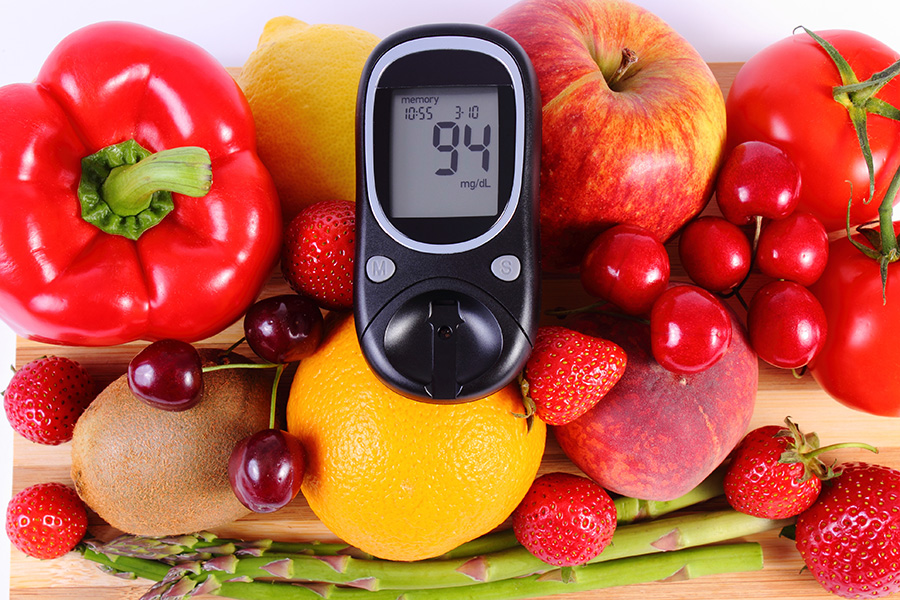Managing Diabetes through Certified Diabetes Educator Support via Telehealth
Barriers to Diabetic Management
Diabetic patients often face a
condition that is difficult to manage and has many components to understand to
self-manage correctly. Each patient can react differently to the same foods and
medicines without any obvious reason as to why, and for each patient some days
may differ from others. These patients are taught about their blood sugar,
checking their readings once very few days to several times per day (How do I
use this machine? How do I get a good blood sample?), how to administer their
medicines (Is it injectable or oral? How often do I take it? Is there a sliding
scale?), having follow up blood work (Every 3 months? How do I get time off
work or get transportation?), and don’t forget about the lifestyle changes that
need to be part of their everyday to help avoid furthering their condition.
These patients often are encouraged to join Diabetic Education classes but
there are costs often associated with these classes and hurdles to navigate to
get time off work, secure childcare, or find transportation.
Polonsky et al. (2020) demonstrated
in their study that Diabetic patients who had access to telehealth support
decreased their perceived distress in managing their Diabetes diagnosis. The
participants in this study were asked about their overall stress related to the
Diabetes diagnosis, managing their treatment and communicating with their
clinical team, how the diagnosis will affect their life and family routines,
and the effect on their mental health (Polonsky et al., 2020). This study
exhibits the complex nature of patients managing this diagnosis and how they
are impacted not just physically but mentally, as well. When working with newly
diagnosed diabetic patients, it is easy to hear their frustration and fear when
talking about all the moving parts that they now have to consider if they want
to feel better and not have the complications they’ve heard about or watched
their loves one battle.
Guidance for Diabetic Best Practices
Centers for Disease Control and
Prevention (CDC, 2022b) explain that the most effective way to truly manage a
Diabetes diagnosis is through staying aware of daily blood sugar readings and
what foods and activities negatively or positively influence the trend.
American Diabetes Association (ADA, 2022b) states that the Hemoglobin A1c test
(HgbA1c) is an important part of a Diabetic treatment and self-management plan
in that it reflects how well the blood sugar is being managed over a period of time.
The ADA (2022b) explains that most Diabetic patients’ HgbA1c target should be 7%
or less, and to remember that the higher the Hgb A1c number, the higher the
daily blood sugar trend. ADA (2022a), also, emphasizes the importance of
healthy eating and healthy activity, making sure to remember that what works
for one person may not be the best for another. Implementing these practices
and getting to know how daily choices affect a patient’s personal blood sugar
trend can go far in helping them feel better and get healthier (ADA, 2022a).
The CDC (2021a) explains that diabetes
also affects a patient’s heart, potentially causing twice the risk for heart
disease or stroke. Continuous high blood sugar levels injure heart blood
vessels and nerves, leading to difficulty for the heart to pump blood to the
body (CDC, 2021a). CDC (2021a) explains that, fortunately, many of the same
lifestyle changes that can positively influence blood sugar also can improve
heart health, such as eating a healthy diet, getting active, managing stress
levels, and knowing your numbers (cholesterol, blood pressure, blood sugar,
A1c), as well as having a certified diabetes educator (CDE) to help
successfully navigate these health conditions.
Implementing Telehealth Support
Certified Diabetes Care and
Education Specialists provide guidance on daily food choices, exercise habits,
and blood sugar monitoring, and can help someone living with Diabetes learn how
to manage their condition in a way that improves their health and avoid
debilitating complications. According to the Association of Diabetes Care &
Education Specialists (ADCES, 2021a), this care team member will help patients
self-manage through techniques that fit the patient’s needs and overcome
barriers that can threaten improved blood sugar control. The main components to
managing diabetes include coping, eating, activity, medicines, blood sugar and
A1c monitoring, solving problems for a healthier lifestyle, and risk reduction
(ADCES, 2021b). As indicated by Polonsky et al.’s (2020) study, diabetic
patients feel more secure and less stress when they have access to clinical
support, and using the telehealth mode of providing that support allows the
patient to gain this access more easily.
The Florida Department of Health
county offices are an ideal partner to gain trust from the providers managing
their Diabetic patients, as well as the trust of the public. Establishing CDE
representatives at the county office level will allow them to perform
grassroots outreach to local providers and their Diabetic patients to enroll
them in the telehealth program. These patients will have weekday access to
their CDE clinicians, who will work with that patient through scheduled
telephonic appointments and provide unscheduled outreach support if messages
come through the Department of Health patient portal.
Upon enrollment, each patient will
be educated on understanding the role of the CDE representative, understand how
to contact their provider for symptom changes, and understand when to seek
emergency medical attention; the patients will be reminded of these details
throughout program participation. The CDE clinicians will help the participants
learn how to make food changes and healthier food choices, learn about blood
sugar management techniques, and how activity can improve their blood sugar
trend. The CDE representative will be able to guide patients on what to expect
from their treatment and how to overcome medication adverse effects. The CDE clinicians
will, also, be able to instruct patients on how to use glucometers, insulin
syringes, and injectable pens.
By using the telehealth support, these Diabetic patients are anticipated to learn more about their specific condition, and how their diagnosis is best managed through tailored guidance. The goal will be that the participants will demonstrate self-management skills, treatment knowledge, and sick-day action plans within 120 days of entering the program and at that time will graduate from the CDE telehealth support.
Summary
Diabetic patients are often
overwhelmed in managing their condition and find it hard to navigate all the
new information and expectations to treat this diagnosis. If lifestyle changes
aren’t made to improve their blood sugar, this can lead to many health
complications including heart disease. Having individualized support by a
certified clinician can improve their understanding of treatment, lifestyle
changes, and decrease their stress levels. By implementing a telehealth CDE program,
more patients can be reached in a manner that allows for ease and convenience,
and eliminates the barriers often associated with attending classes or going to
the provider office.
References
American Diabetes
Association. (2022a). Newly diagnosed. https://www.diabetes.org/diabetes/newly-diagnosed
American Diabetes
Association. (2022b). Understanding A1c. https://www.diabetes.org/a1c
Association of Diabetes
Care & Education Specialists. (2021a). How a diabetes care and education specialist can help you. https://www.diabeteseducator.org/living-with-diabetes/how-a-diabetes-educator-can-help-you
Association of Diabetes
Care & Education Specialists. (2021b). Tools and resources. https://www.diabeteseducator.org/living-with-diabetes/Tools-and-Resources
Centers
for Disease Control and Prevention. (2021a). Diabetes
and your heart. https://www.cdc.gov/diabetes/library/features/diabetes-and-heart.html
Centers for Disease
Control and Prevention. (2021b). Monitoring your blood sugar. https://www.cdc.gov/diabetes/managing/managing-blood-sugar/bloodglucosemonitoring.html
Polonsky, W. H., Layne,
J. E., Parkin, C. G., Kusiak, C. M., Barleen, N. A., Miller, D. P., Zisser, H., & Dixon, R. F. (2020).
Impact of participation in a virtual diabetes clinic on diabetes-related distress in individuals with Type 2 Diabetes. Clinical
Diabetes, 38(4), 357–362.
https://doi-org.ju.idm.oclc.org/10.2337/cd19-0105




Great information Jamie! This could be so valuable to a newly diagnosed diabetic during a time that is so overwhelming. Technology is a part of everything we do today so taking disease management to the next level makes perfect sense.
ReplyDeleteI places the power of disease management in the hands of the individual instead of the other way around.